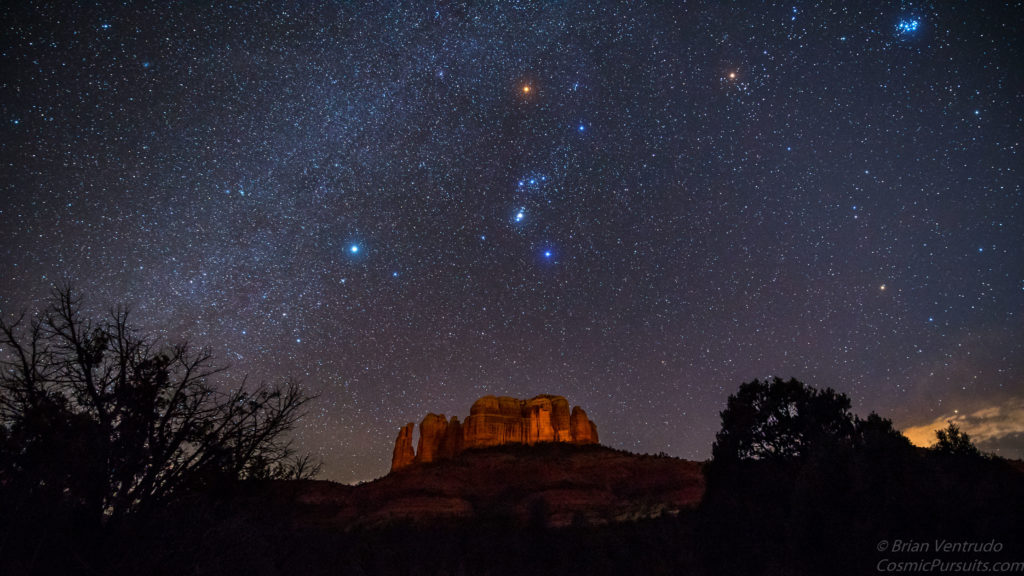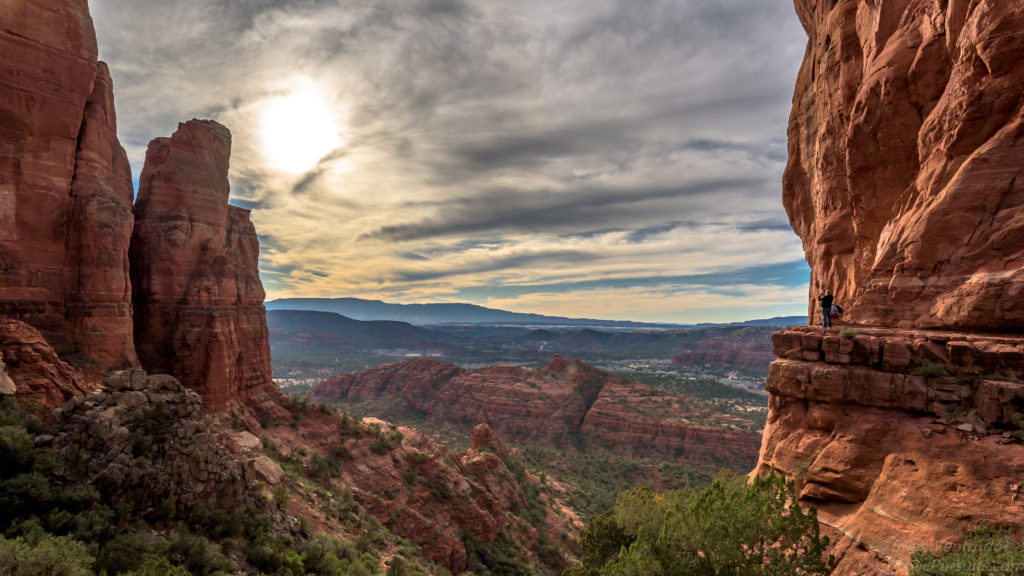
If only capturing all nightscape images was this easy! In the international dark-sky community of Sedona, Arizona, where artificial lighting is strictly controlled, you can simply pull over by the side of the road on the outskirts of town on a clear night, set up your camera on a tripod, and release the shutter. Chances are you’ll capture something good.
This image of the winter stars over the red sandstone formation known as Cathedral Rock, taken in mid-February, required only slightly more planning. After a day hike up to a saddle point in this conglomeration of red sandstone, I noted the orientation of this famous landmark relative to the sky as seen from trailhead, waited for a clear night, and snapped away. Here you see the stream of the winter Milky Way at the upper left, and the winter constellations from Canis Major at lower left, through Monoceros and Orion at center, to Taurus at the upper right.
By day, red sandstone is the most conspicuous feature of the Sedona area. These heavily eroded formations get their distinctive red-orange coloring from ferric oxide– rust– within the rock itself. These sedimentary rocks originated at the bottom of an ancient sea bed during the Permian period some 275 million years ago. By comparison, most of the stars in the above image, especially in Orion, formed less than 10 million years ago. They’re part of a secondary wave of star formation in the Gould Belt, a ring of stars around our part of the Milky Way caused by the collision of an extragalactic gas cloud with our galaxy. Of all the bright stars in this image, Sirius comes closest to matching the age of these ancient sea beds. Because it’s not particularly massive, Sirius burns its fuel relatively frugally. The star is about 230 million years old and still going strong.

According to the many spiritual and new-age seekers who come to Sedona, Cathedral Rock marks the location of a vortex, a place where a swirl of energy of an unspecified nature emanates from the Earth to stimulate healing and well-being. The locals call them vortexes, not vortices, and there are at least four around the town. I must confess, upon standing in these locations, at Cathedral Rock and elsewhere, and in the town in general, I did feel a little better than usual. It could have been the influence of the vortexes. Though Occam’s Razor suggests I felt better simply because I was on vacation.
At the extreme upper right of the image at the top of this page, you see the Pleiades star cluster, the famous “Seven Sisters”. The Hopi, the native North Americans who continue to inhabit this part of Arizona, believed their ancestors came from the Pleiades, a cluster they called Chuhukon, which means “those who cling together”. It was an inspired guess. Though the Hopi, and all humans and the planet we live on, did not come from the Pleiades, we did coalesce out of the ejecta of similarly bright stars that died billions of years ago in other parts of the galaxy. Surrounded by the ancient red rocks of Sedona, under dark and pristine skies, there are few better places to contemplate this most astounding fact.
Share This: